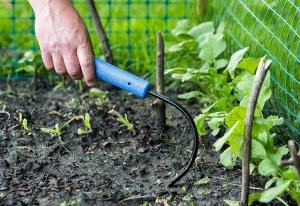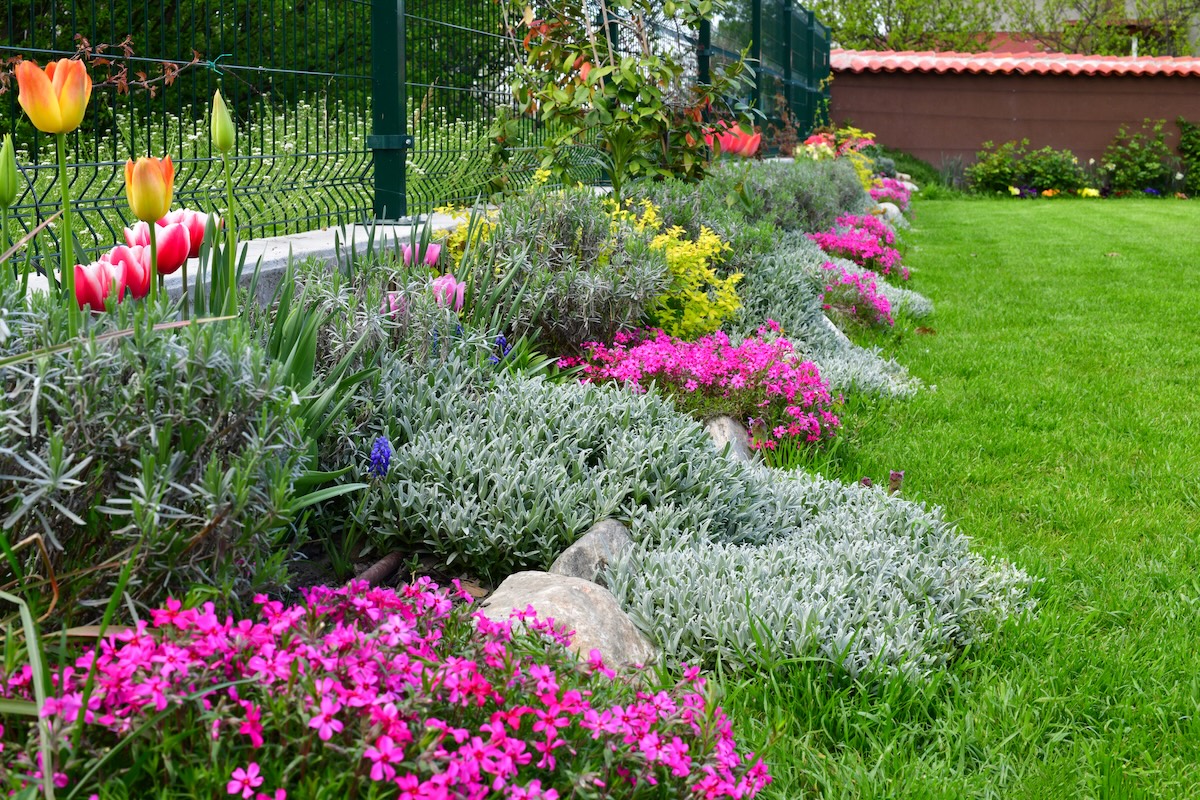

We may earn revenue from the products available on this page and participate in affiliate programs. Learn More ›
As The New Sunset Western Garden Book, edited by Kathleen Norris Brenzel, notes, “Lawn is the best-known groundcover, unsurpassed as a surface to walk and play on. But where foot traffic is infrequent, many other plants offer much of a lawn’s neatness with far less maintenance.”
When considering their attributes, it’s a good idea to opt for blooming types, since ground cover flowers provide carpets of color. When planting ground covers, just keep in mind that the plants’ ability to cover ground quickly can make them invasive if they are allowed to run rampant!
1. Carpathian Bellflower (Campanula carpatica)

Also known as tussock bellflower, this flowering ground cover grows from 6 to 12 inches tall with 1- to 3-inch purple or white bell-shaped blooms from late spring to early summer. Its semi-evergreen leaves are small (1 to 1½ inches) and heart-shaped with toothed edges.
The bellflower grows well in either full sun or partial shade and its flowers attract hummingbirds and other pollinators. However, North Carolina Extension warns that “Plants tend to be short-lived when planted in hot, humid areas where nighttime temperatures do not fall below 70 degrees.”
Best For: Container, edging, patio
Hardiness Zones: 3 to 8
2. Creeping Thyme (Thymus serpyllum)
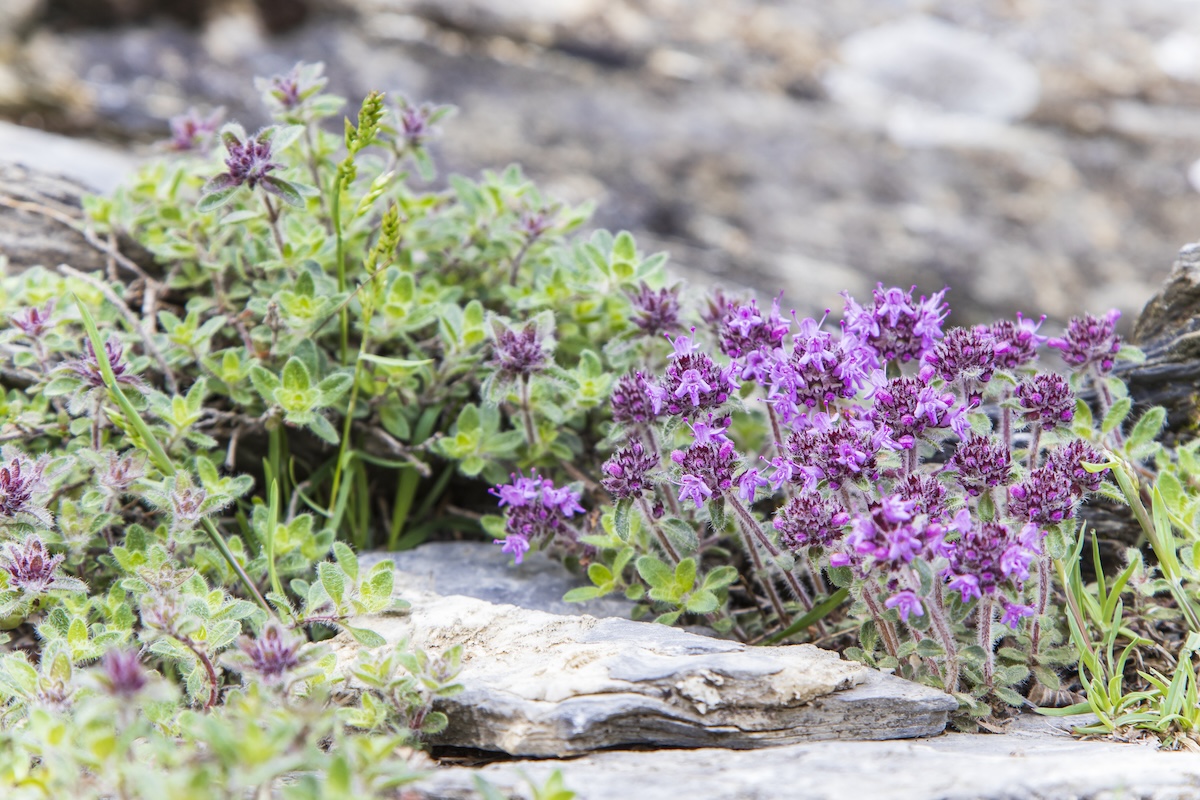
Creeping thyme is a woody evergreen that can tolerate dry or poor soil once established. It’s equally versatile in various garden designs, but really shines as a ground cover between flagstone paths. The low-maintenance ground cover requires some pruning to manage growth, but it is not invasive and rewards the gardener with pink or purple flowers from June through September.
Plant creeping thyme in soil that drains well and full sun for best results. Once established, the attractive ground cover is drought tolerant. It attracts pollinators, yet is resistant to deer and rabbits that munch on some ground covers.
Best For: Cottage garden, rock garden, pollinator garden
Hardiness Zones: 4 to 9
3. Creeping Phlox (Phlox subulata)
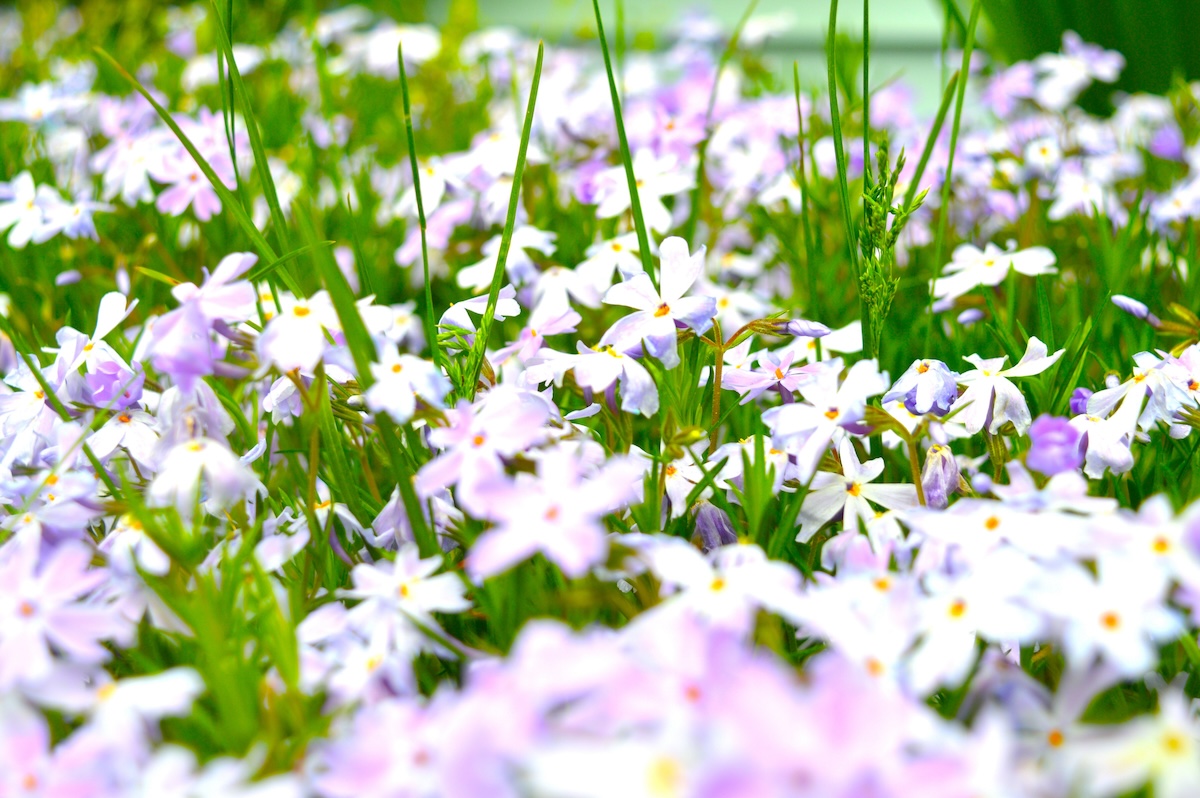
Speaking of creepers, this phlox also scrambles along the ground, seldom topping 6 inches in height and making mounds of needle-like foliage, which explains an alternative name: moss phlox. It blooms most heavily in early to mid-spring, the 4- to 5- petaled flowers that are under an inch wide can appear in profusion, creating a carpet of color.
Cultivar colors include red, pink, white, and many shades of purple. The plant blooms best in full sun but also tolerates dappled sunlight.
Best For: Banks, edgings, walls
Hardiness Zones: 3 to 9
4. Dwarf Periwinkle (Vinca minor)
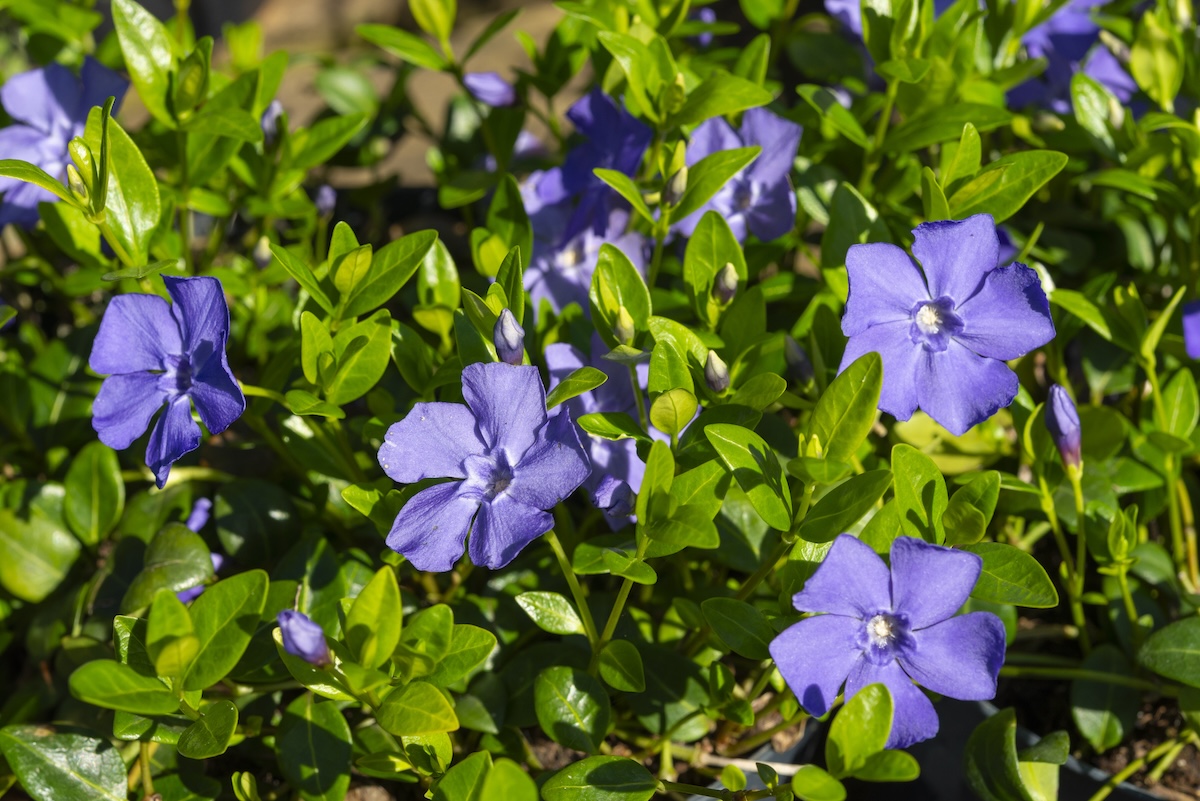
This evergreen ground cover reportedly is less invasive than its larger cousin Vinca major. It grows up to 6 inches tall with oval, leathery green leaves and bluish-purple or white pinwheel-like flowers up to 1 inch across that appear in spring and early summer.
Periwinkle can grow in full shade but that doesn’t necessarily make it one of the shade ground cover plants, since it prefers partial shade or full sun. Although less invasive than V. major, this still is a fast-growing ground cover, so be careful to contain it to spaces where it won’t be a problem.
Best For: Banks, contained spaces, ground beneath trees
Hardiness Zones: 4 to 9
5. Dwarf Plumbago (Ceratostigma plumbaginoides)
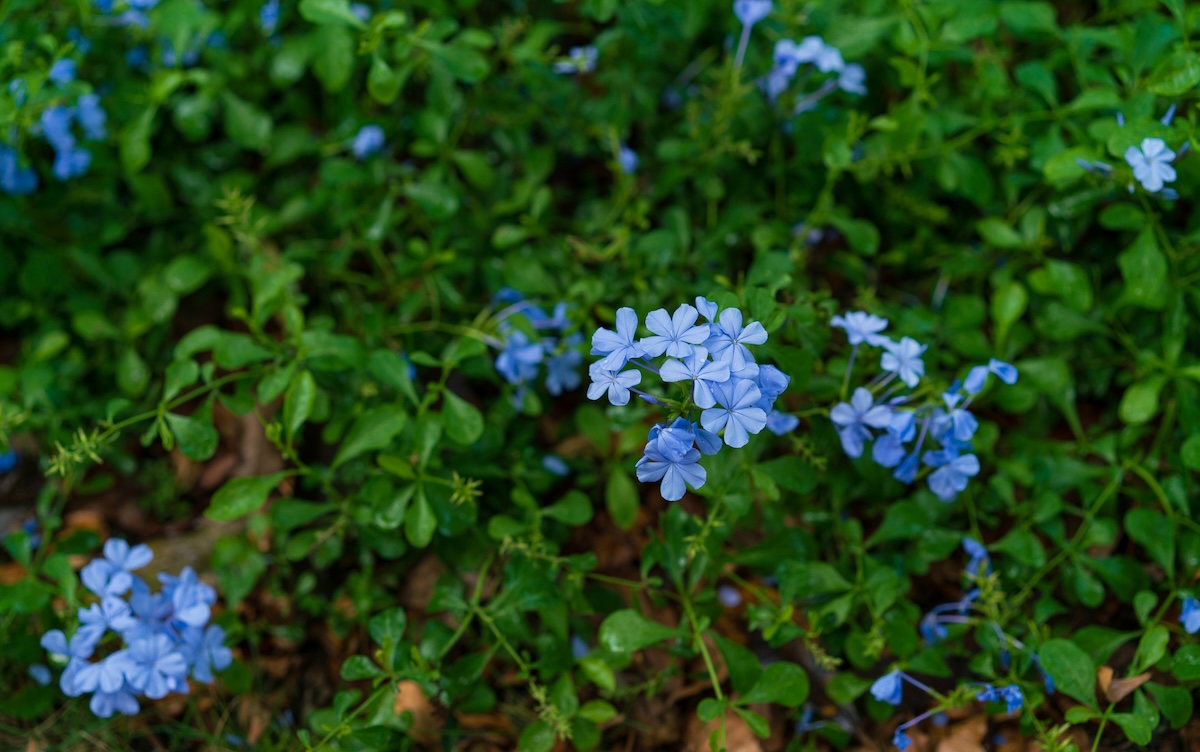
Tabar Gifford, partnership cultivator at High Country Gardens, notes that plumbago “is a hidden gem that quietly does everything right. It bursts into vivid blue blooms in late summer—a rare and striking color in the garden—and follows up with rich burgundy foliage that lasts into fall.”
Gifford adds: “It thrives in tough spots like dry shade and clay soil, tolerates foot traffic, and naturalizes without becoming invasive. It’s also a favorite of late-season pollinators and hummingbirds.” Plumbago’s leaves will drop during winter and gardeners in zone 5 should mulch the plant during the cold to protect it.
Best For: Banks, containers, ground cover under shrubs
Hardiness Zones: 5 to 9
6. Groundcover Rose (Rosa spp.)
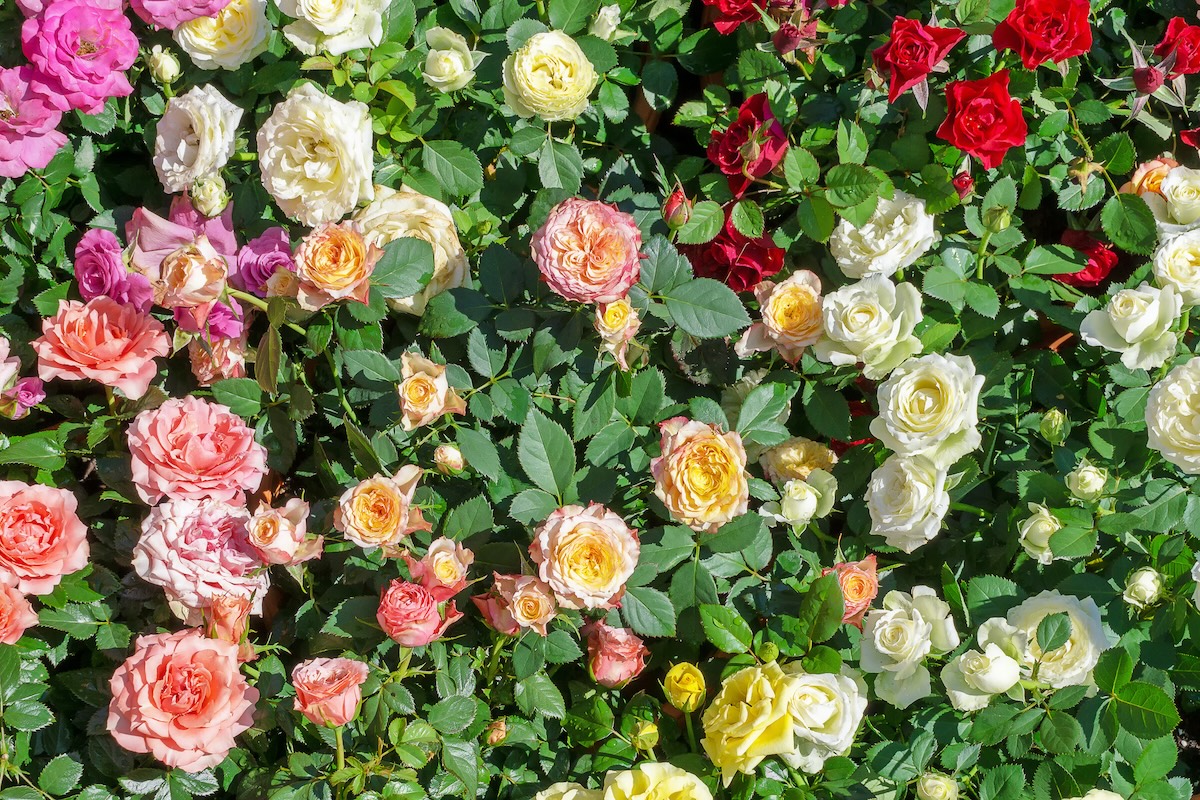
Ground cover roses such as the Drift, Flower Carpet, Happy Trails, and Meidiland series typically only grow about 1 to 3 feet tall but can spread to twice their height. They provide a full-sun ground cover that typically continues to bloom all summer. Ground cover roses are available in a variety of colors, including red, pink, yellow, and white.
The New Sunset Western Garden Book notes that low-growing roses are good for “creating low barriers to foot traffic on level ground.” In other words, a prickly border of them can discourage people from taking a shortcut across your garden bed.
Best For: Barriers, pots, slopes
Hardiness Zones: varies from 4 to 10
7. Ice Plant (Delosperma spp.)
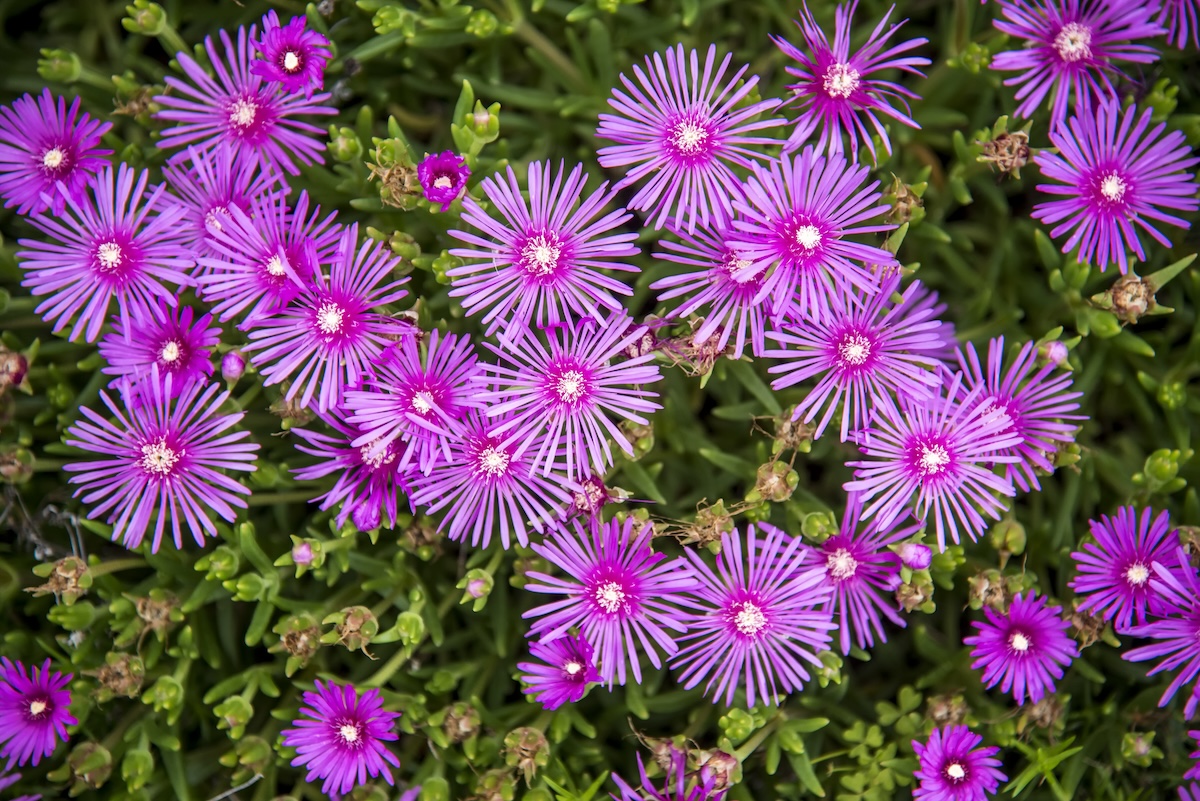
This drought-tolerant ground cover is a succulent plant that typically grows to only about 3 inches high but can spread up to a foot wide. Its cylindrical leaves glisten due to hairs on their surface—which explains the “ice” in the plant’s name.
The 1- to 3-inch wide many-rayed flowers are brightly colored in red, pink, purple, or white hues. These low-maintenance ground cover plants need full sun and actually prefer poor but very well-draining soil, so refrain from adding fertilizer or too much water to their site.
Best For: Banks, patios, rock gardens
Hardiness Zones: 5 to 8
8. Snow in Summer (Cerastium tomentosum)
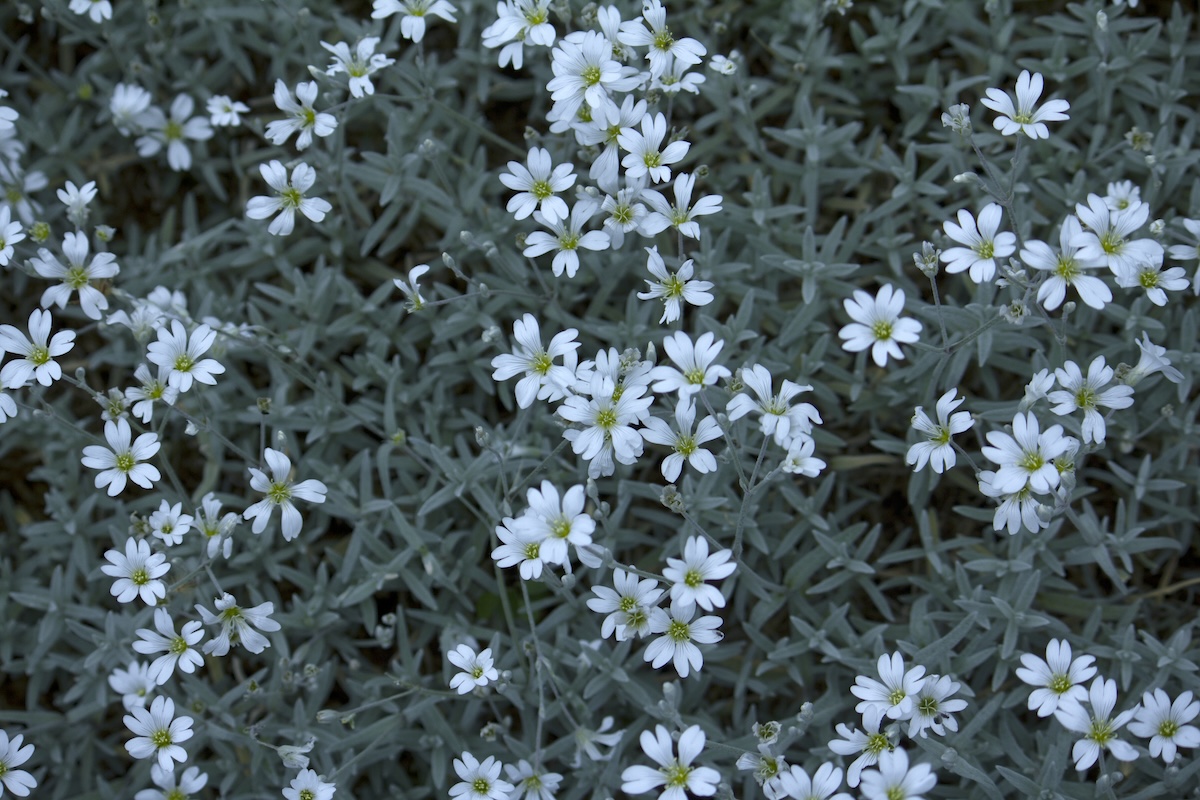
These ground-covering plants with narrow, velvety silver leaves grow only to about 6 inches but send up flower stems that are 8 to12 inches tall. Each stem can offer up to 15 “snowflakes” (star-shaped white blooms) that are about ½ to ¾ inch around in early summer.
Although perennial, the plant typically doesn’t live long but does self-seed heavily enough to produce plenty of ground cover seedlings. It prefers full sun or partial shade in well-draining soil and might develop root rot in soggy conditions.
Best For: Sandy soil, edging, rock garden
Hardiness Zones: 3 to 7
9. Sweet Woodruff (Galium odoratum)
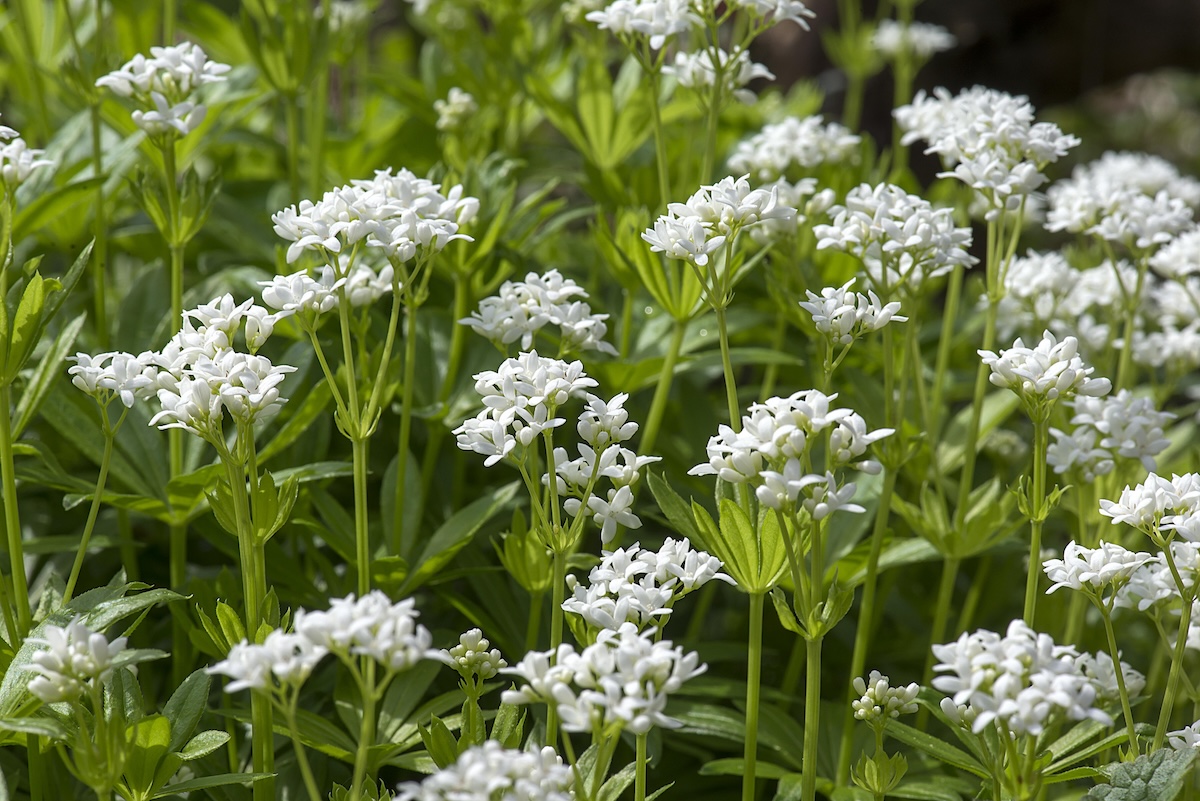
Among ground-covering shade plants is sweet woodruff, which reaches 6 to 12 inches high and offers whorls of skinny evergreen leaves topped by clusters of small, fragrant, and edible 4-petaled white flowers in spring. The plants tolerate heavy shade and are among plants that can grow near black walnuts.
The plant can drop into dormancy during summer if the soil dries out, so keep them watered in peak heat. Conversely, when happy, they can grow quickly and even spread aggressively.
Best For: Edible garden, edging, herb garden
Hardiness Zones: 4 to 8
10. Wild Strawberry (Fragaria vesca)
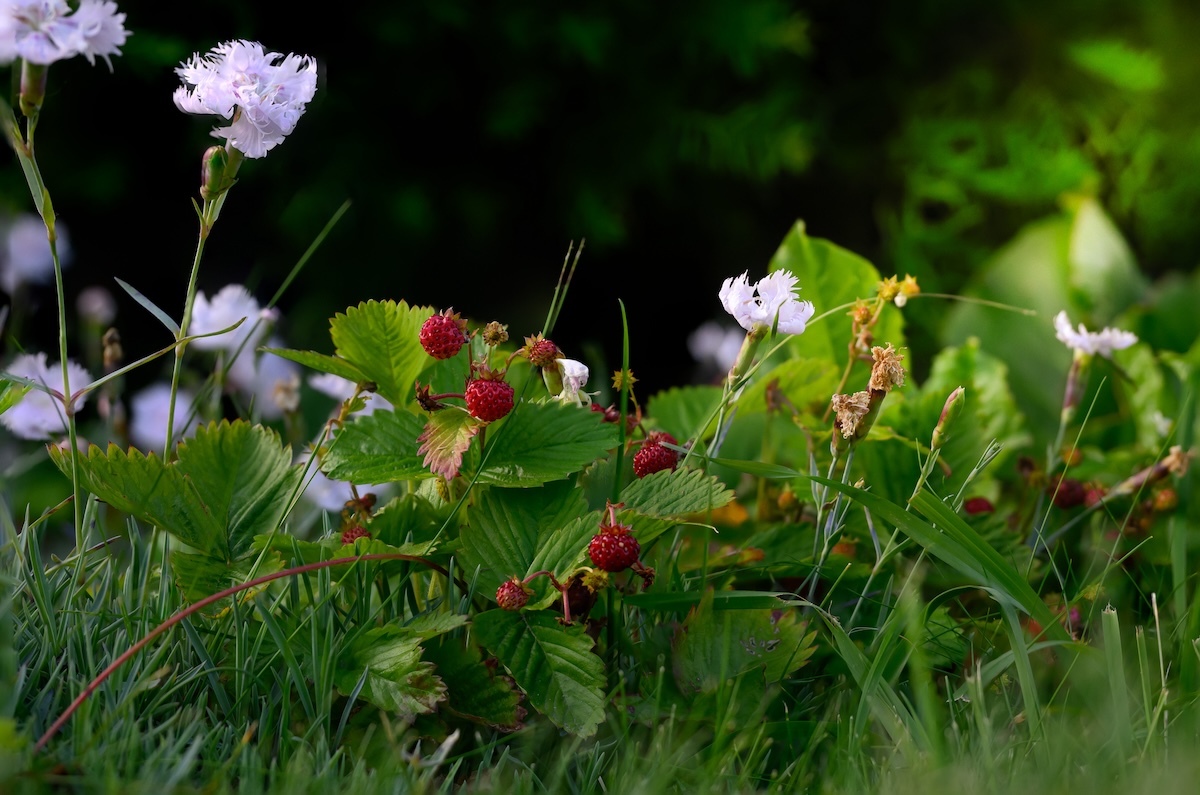
Wild strawberries make good ground-covering plants, plus they can make good fruit. Although tiny, the berries are very sweet and should appeal to both you and wild birds. The plants grow to only about 8 inches high in either full sun or partial shade.
Numbered among the edible ground covers, strawberries produce yellow-centered, 5-petaled white blossoms all summer, which are followed by ½-inch fruits. Those usually are red but yellow and white-fruited cultivars also are available, as are cultivars with variegated leaves to add even more ground cover color.
Best For: Edging, native garden, rock garden
Hardiness Zones: 5 to 9
